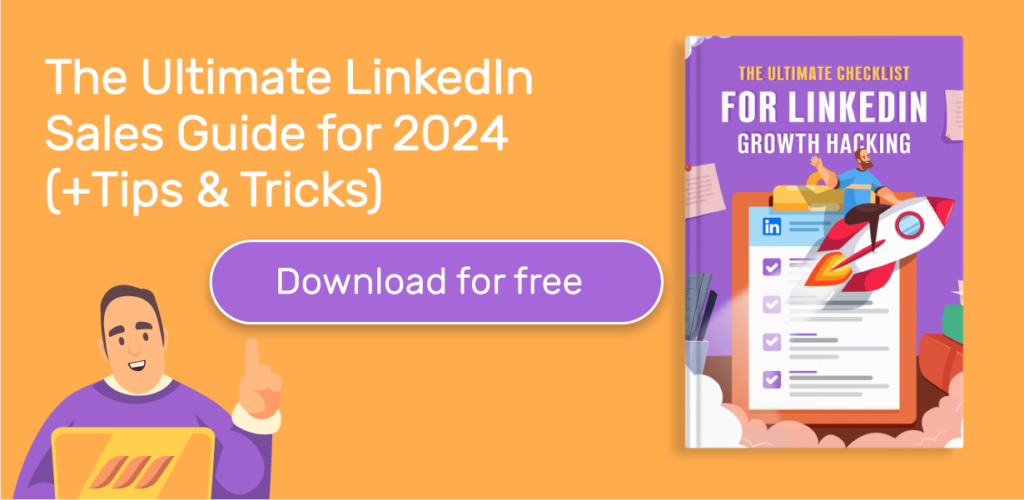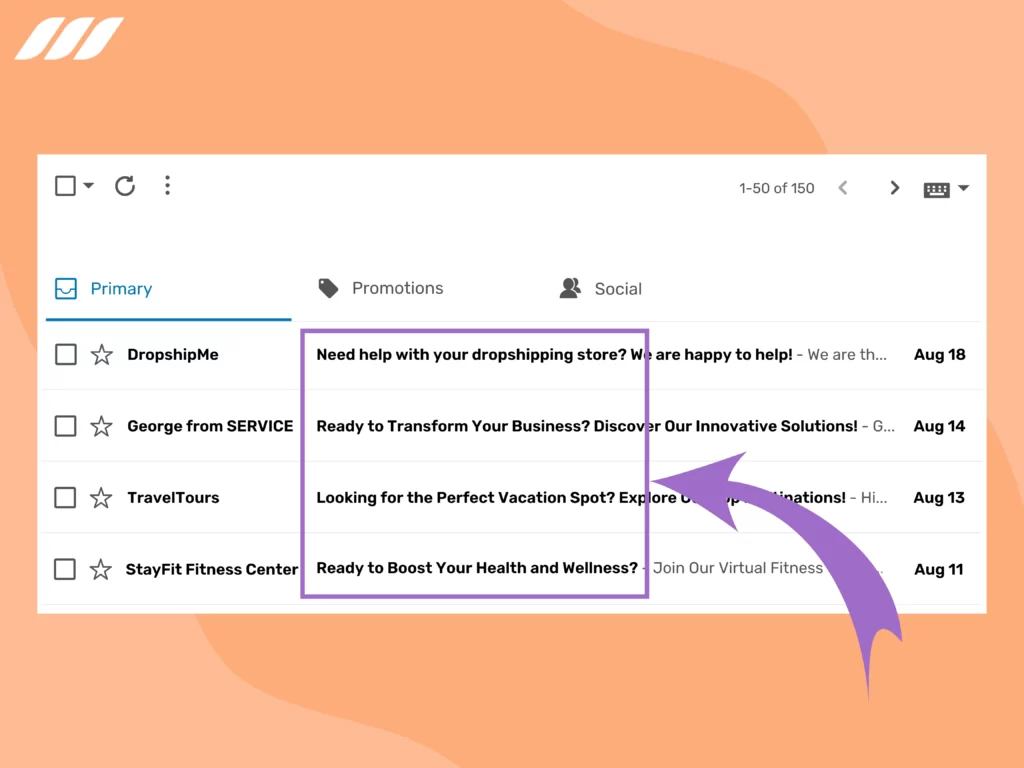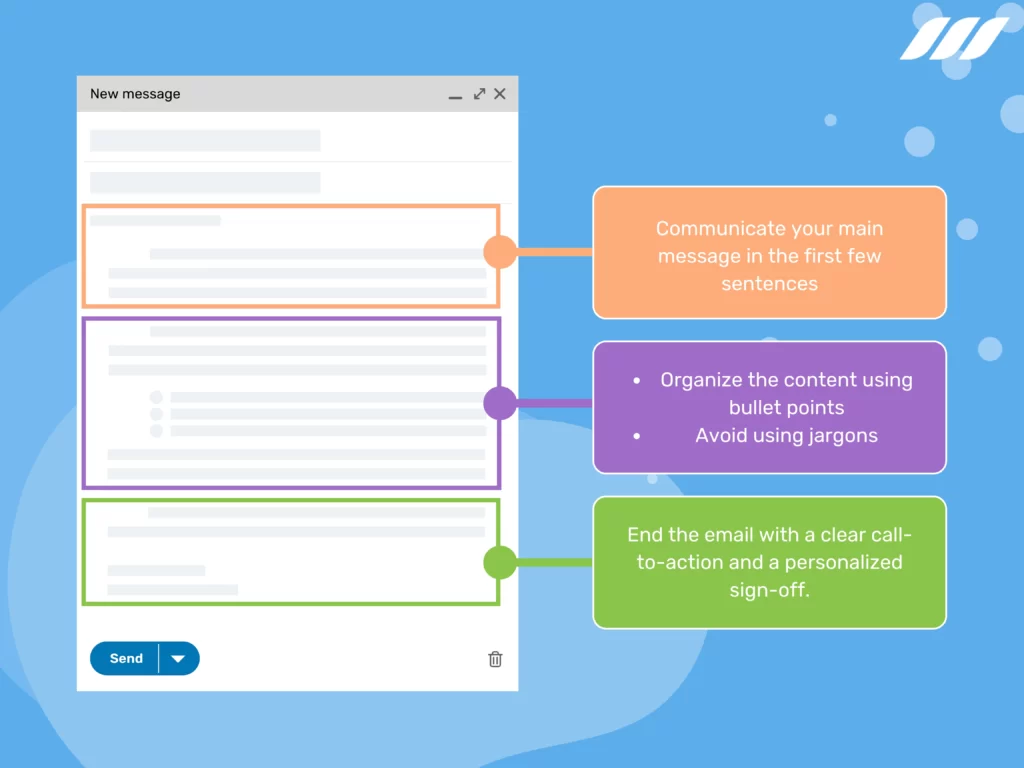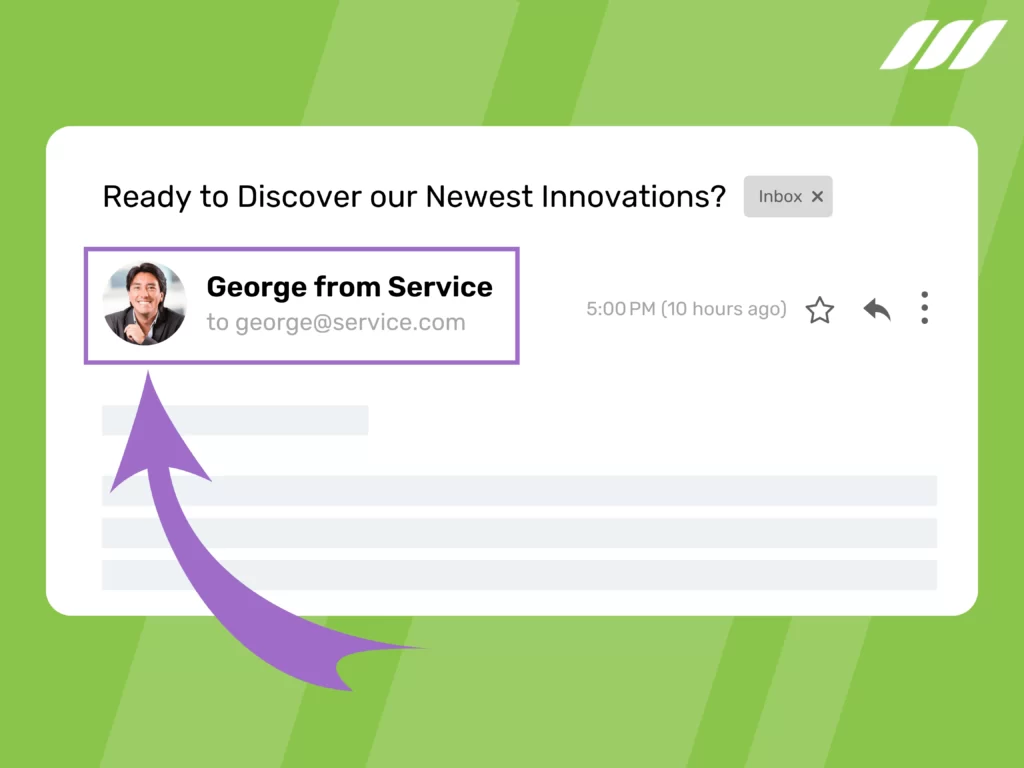|
Getting your Trinity Audio player ready...
|
Do you spend hours crafting the perfect email campaign only to see abysmal open rates? It’s frustrating, to say the least. But don’t give up on email marketing just yet. Various factors affect email open rates, and you can increase your chances of success with the right strategies.
So, how to increase email open rate? Well, from subject lines to personalization, this article will provide actionable tips and tricks to help you improve your email open rates and increase engagement with your audience.
Get ready to take your email marketing to the next level and see real results!
Read also: Email Marketing Automation Software
What Is an Email Open Rate?
The email open rate is a metric that measures the percentage of subscribers who open an email campaign. It is an important metric that shows how effectively your email campaigns capture your subscribers’ attention.
The formula for calculating the email open rate is:
Email open rate = (Number of emails opened / Number of emails delivered) x 100
For example, if you sent out 100 emails and 30 of them were opened, the email open rate would be: (30 / 100) x 100 = 30%
Therefore, the email open rate for this campaign is 30%.

What Is the Average Email Open Rate?
The average email open rate varies across industries and niches.
According to email marketing statistics, the average email open rate across all industries is around 21.5%. However, this number may not accurately represent your industry’s average email open rate. You should look at benchmarks specific to your industry to determine what a good email open rate is.
Factors Affecting Email Open Rates
From the sender name to the email content, many factors affect whether your subscribers will open and engage with your emails. By understanding these factors, you can make informed decisions about your email marketing strategy and increase your chances of success.
Here’re are the most important factors that affect email open rates:
- Email Subject Line – The subject line plays a crucial role in determining whether or not a subscriber opens an email. It is the first thing that catches their attention in their inbox. A well-crafted subject line should be attention-grabbing, informative, and concise.
- Email Sender Name – Subscribers are more likely to open an email from a sender they recognize and trust. As such, using a recognizable and trustworthy sender name is a good idea to raise the likelihood of your email being opened.


- Email Timing – The timing of your email can also impact open rates. You need to send your emails when the receivers are most likely to check their emails. You may want to experiment with different days and times to see what works best for your audience.
- Email List Quality – The quality of your email list plays a vital role in open rates. Make sure your email list is clean, up-to-date, and contains engaged subscribers. If you have a higher volume of inactive or invalid email addresses, your emails are more likely to end up in spam folders.
- Email Content – Ensure your email content is interesting, educational, and tailored to your subscribers’ interests and needs. If your content is dull or uninteresting, subscribers are less likely to open future emails.
- Deliverability – Email deliverability is the ability of your emails to reach the subscriber’s inbox. If your emails end up in spam folders or are blocked by email service providers, your open rates will suffer.
- Email Design – The design of your email can also impact open rates. A cluttered or unattractive design can turn subscribers off, while a well-designed email can increase engagement.
- Email Personalization – Personalizing your emails with the subscriber’s personal information like name can increase open rates by creating a more personalized experience for the subscriber.


Tips on How to Increase Email Open Rate
Remember, email marketing is an ongoing process requiring constant testing and optimization to achieve success. Keep experimenting and refining your strategy to see real results.
Here’re are tried and tested strategies on how to increase email open rate:
1. Craft an Attention-Grabbing Subject Line
Your subject line is the first thing you can use to leave a great impression on your subscribers. A boring or generic subject line can lead to lower open rates, while a compelling subject line can entice subscribers to open your email.
Here’s how you can create attention-grabbing subject lines:
- Keep it Short and Sweet – Short subject lines are more effective as they are easier to read and understand. Limiting subject lines below 50 characters is good to increase open rates.
- Personalize Your Subject Line – Including the subscriber’s name or other information in the subject line can add a personal touch to make your email feel more personal, increasing your email open rates.
- Create Urgency – Write your email subject line to create a sense of urgency to entice subscribers to open your email. For example, “Limited Time Offer” or “Last Chance” can motivate subscribers to take action.
- Ask a Question – Consider asking a question in the subject line as it can stir the subscriber’s curiosity and encourage them to open the email to find the answer.


- Use Numbers or Lists – Including numbers or lists in the subject line can create a sense of organization and make the email feel more valuable to the subscriber.
- Avoid Spam Trigger Words – Certain words or phrases can trigger spam filters and prevent your email from reaching the subscriber’s inbox. Avoid words like “free” or “limited time” to reduce the risk of your email landing in the spam folder. Learn more about how to avoid email spam filters.
- Test and Experiment – Test different subject lines to see what works best for your audience. Use A/B testing to compare different subject lines and refine your strategy over time.
2. Personalize Your Emails
Email personalization strategies can significantly increase open rates. Plus, personalization can help you build a stronger connection with your subscribers. When you personalize your emails, you show your subscribers that you understand their needs and interests. It can also increase email engagement and customer loyalty.
Here are some tips for personalizing your emails:
- Include the subscriber’s first name in the email body and subject line.
- Use dynamic content as it allows you to display different content to different subscribers based on their preferences or behavior.
- Send triggered emails. For instance, you may want to send a welcome email right after someone signs up for your email list or a cart abandonment email when someone leaves items in their shopping cart.
- Include personalized product or content recommendations based on the subscriber’s behavior or interests.
- Write your emails in a conversational tone to make them feel more personal and engaging. Use “you” and “your” to address the subscriber and create a sense of connection.
3. Segment Your Email List
Segmenting your email list means dividing your email subscribers into different groups based on various criteria such as age, gender, interests, location, or behavior. When you segment your email list, it can help you send more targeted emails to your subscribers.
Say you run an eCommerce store that sells clothes for both men and women. You can create a segmented list based on the gender of your customers and then send personalized emails to each group featuring products that are more relevant to them. This will not only increase the open rates of your emails but also drive more sales and revenue for your business.
Other segmentation criteria can include subscribers’ purchase history, website activity, or engagement level with your previous emails.
4. Optimize Your Email Sender Name
When it comes to optimizing your email sender name, there are a few things to keep in mind.
First, you want to choose a sender name that is familiar and recognizable to your subscribers. This could be your company name, a brand name, or the name of a person they know and trust, such as a CEO or customer support representative. Doing so will help you establish trust and credibility with your subscribers, increasing the likelihood that they will open and engage with your emails.
Second, ensure your sender name is consistent across all your emails. If you use a different sender name for each email campaign, your subscribers may not recognize the email as being from you, and they may be less likely to open it. Consistency is key to building trust and establishing your brand identity.
Finally, consider combining your sender name and subject line to create a compelling message encouraging your subscribers to open your email. For example, if you run a travel company, you could use a sender name like “The Travel Experts” and pair it with a subject line like “Exclusive deals for your next adventure!” This creates a sense of urgency and excitement, making your subscribers more likely to open your email.
5. Keep Your Email List Clean
It is always a good practice to clean your email list regularly by eliminating inactive subscribers or bounced email addresses. This can help improve email open rates and engagement.
Here are some tips on how to keep your email list clean:
- Regularly remove inactive subscribers;
- Use a double opt-in process to ensure only engaged subscribers are added to your list;
- Verify email addresses to remove invalid or fake email addresses (learn what is email verification);
- Honor unsubscribe requests promptly to keep your list up-to-date;
- Keep your list organized and segmented to improve deliverability;
- Monitor your email engagement metrics to identify and remove low-engagement subscribers;
- Avoid buying email lists to maintain a high-quality and engaged subscriber base.
6. Send Emails at the Right Time
Sending emails at the right time can significantly impact your open rates and overall email engagement. It’s important to consider the time zone of your subscribers, as well as their daily routines and habits.
For example, if you’re targeting working professionals, it’s best to send emails during the workweek, ideally in the morning or early afternoon, when they’re most likely to check their emails.
Also, you should consider your specific industry and target audience when determining the best time to send emails. For example, if you’re targeting college students, they’re more likely to check their inboxes in the evening or late at night.
It is a good idea to experiment with different send times and analyze your email metrics to identify the most effective send times for your particular audience. By sending emails at the right time, you can improve your email open rates and maximize the impact of your email campaigns.
7. Use A/B Testing
A/B testing allows you to test different subject lines, sender names, and email content to find out the best way to approach your audience. By experimenting with different elements and analyzing the results, you can optimize your email campaigns and increase open rates.
8. Keep Your Email Copy Concise


Always keep your email copy short and to the point because subscribers are more likely to read and engage with shorter emails. Remember, your target audience might receive a large volume of emails daily, so it’s important to keep your message clear and concise.
This means you should communicate your main message in the first few sentences. Consider writing short paragraphs and using bullet points to organize the content. You can start an email with a personalized greeting or a catchy opener that can capture the reader’s attention and encourage them to read further.
What’s more, avoid using overly complex language or industry jargon that may confuse your readers. Instead, use clear and concise language that is easy to understand. Plus, try to avoid lengthy email signatures or unnecessary graphics that may distract from the main message.
And finally, try to end an email with a clear call-to-action and a personalized sign-off. This can leave a positive impression and prompt the reader to take action.
9. Add a Sense of Urgency
Use urgency in your subject line or email copy to encourage subscribers to open and take action on your email.
- Use time-limited offers or promotions, such as “Limited time only” or “Offer expires in 24 hours”
- Highlight scarcity or limited availability, such as “Only 5 spots left” or “Last chance to register”
- Use action-oriented language that encourages immediate action, such as “Act now” or “Don’t miss out”
- Use urgent language in your subject line, such as “Last chance” or “Urgent: Time-sensitive offer”
Examples:
- “Hurry, only a few hours left to claim your discount!”
- “Limited stock alert: Get yours before it’s gone!”
- “Don’t miss out on this exclusive offer – act now!”
- “Final reminder: Only a few spots left for our upcoming webinar!”




10. Provide Valuable Content
Valuable content will help keep your subscribers engaged and interested in your emails. Remember, people are more likely to open and read emails that offer them something of value, whether it’s information, entertainment, or discounts.
To provide valuable content, ensure your emails are relevant to your audience and offer them something they can’t get elsewhere. This can include exclusive content, such as sneak peeks or behind-the-scenes access, helpful tips and advice, or special promotions and discounts.
You may also want to ask your subscribers for feedback to find out what interests them and tailor your content to their needs. This can ultimately lead to increased engagement, higher open and click-through rates, and more conversions.
11. Use Emojis
Emojis can add personality and humor to your email subject lines, making them more eye-catching and engaging. Those little signs help your emails stand out in crowded inboxes, besides conveying emotions and tone that might be difficult to express with words alone.
But it’s important to use emojis strategically and sparingly. It is not a good idea to overuse or misuse emojis, as this can come across as unprofessional or spammy. And make sure the emojis you choose are relevant to your content and audience.
12. Optimize for Mobile


The majority of email opens occur on mobile devices, so ensure that your emails are adaptable for mobile viewing with clear and easy-to-read content.
For example, your email should have a clean and simple design that’s easy to navigate on a mobile device. Consider using legible font size and avoid too much text or large images, which could slow load times.
Also, test your emails on different devices and email clients to ensure they look good and function properly across various platforms.
13. Include a Clear Call-to-Action (CTA)
A clear CTA tells subscribers what action you want them to take after opening the email. Make sure your CTA is prominent and easy to find. Also, use action-oriented language that clearly communicates what you want your subscribers to do, such as “Register Now” or “Shop the Sale.”
14. Use Social Proof
Including social proof, such as customer reviews or testimonials, in your emails can help build trust and credibility with your subscribers.
It is also good to highlight your social media followers and shares or likes to show that your brand is popular and trustworthy. And try to display industry awards, certifications, or endorsements to showcase your expertise and authority in your field.
15. Experiment With Email Frequency
Test different email frequencies to see what works best for your audience. Sending too many or too few emails can negatively impact open rates. Remember, every audience is different, so there’s no one-size-fits-all approach to email frequency. By testing and tweaking your email frequency over time, you can find the right balance that keeps your subscribers engaged and loyal to your brand.
16. Use Triggered Emails
Triggered emails are sent automatically based on subscriber behavior or actions. They are highly relevant and can have higher open rates than general email campaigns.
Below are some examples of triggered emails:
- Welcome emails: These are sent to new subscribers when they sign up for your email list. Welcome emails allow you to leave a great first impression on your subscribers and set the tone for future communications.
- Abandoned cart emails: Abandoned cart emails are sent to those who have added items to their cart but haven’t completed their purchase. Abandoned cart emails can effectively re-engaging lost leads and stimulate customers to complete their purchases.
- Birthday emails: These are sent to subscribers on their birthdays, often with a special offer or discount. Birthday emails can help you build a stronger relationship with your subscribers and make them feel valued.
- Re-engagement emails: Re-engagement emails are sent to people who have not interacted with your emails in a while. They can help you regain inactive subscribers and keep your email list clean.
- Post-purchase emails: These are sent to customers after they’ve made a purchase, often with related product recommendations or a request for feedback. Post-purchase emails can help you drive repeat sales and improve your customer retention.
17. Personalize Your Sender Image


Personalizing your sender image can make your emails get noticed, leading to increased open rates. Choose a sender image that reflects your brand and creates a sense of familiarity with your subscribers.
Consider using a headshot of yourself or a team member or an image that reflects your brand’s personality or values. This can help create a human connection with your subscribers and make your emails feel more personal.
You can also experiment with using different sender images for different email campaigns, such as a holiday-themed image for a seasonal promotion.
Bonus: Use Power Words
Power words are words that induce emotions and encourage action. Using power words in your subject line or email copy can increase engagement and open rates.
Some examples of power words that you can use in your emails include: “limited time offer,” “exclusive,” “free,” “new,” “proven,” “secret,” “instant,” “easy,” “discover,” “revealed,” “guaranteed,” “surprising,” “powerful,” “game-changing,” “amazing,” “unbelievable,” and “must-have.”
But remember to use power words in a way that is relevant and meaningful to your subscribers. Don’t use them just for the sake of using them. Instead, think about what your subscribers are interested in, their pain points, and what they’re looking for from your brand.
Also, you can use power words to underscore the benefits of your product or service, to create a sense of urgency around a promotion, or to build excitement around a new product launch.




Conclusion
Using the tips outlined in this article, you can increase email open rates and improve email engagement with your subscribers. Remember to test different strategies and tactics to determine what works best for your audience. With time and practice, you can master the art of email marketing and see significant results in your email open rates and overall email marketing success.

![How to Write a Price Increase Letter [Tips, Examples, and Free Template]](https://dripify.io/wp-content/uploads/2021/12/27.png)
![How to Write an Effective Collaboration Email [+Templates]](https://dripify.io/wp-content/uploads/2023/05/13.png)



